This is a reminder that we have another fun #Wingnut movie night planned on Discord this evening! The ongoing theme will be movies that are referenced by Wing Commander in some way. Tonight's film is Back to the Future (1985) and you can find details on why we're watching it in the announcement post here. The movie will start at 7 PM PST/10 PM EST but feel free to drop by and hang any time!
The Wing Commander movie club has watched Crash (1996) and… that's all we have to say about that! In all seriousness, it's a pretty interesting movie. For all of the extreme sex none of it is really prurient… it's all in the service of telling a decidedly unsexy story. I think what we can say about it overall is that we still had people talking about it the morning after the screening and that's a credit!
We talked about Crash's actual connection to Wing Commander in the intro post… but since this is (probably) the only erotic thriller movie club will get it seems like a good (?) idea to catalog Wing Commander's sex scenes. Which is easier done than said, as Wing Commander is largely a pretty chaste IP. In fact, Chris Roberts famously avoided anything of the sort in Wing Commander IV because of the response to the 'kiss Rachel or Flint' mechanic in its predecessor. In spite of this, we have had a few sex scenes in the canon… and some of them are quite terrible!
Most of what we're calling sex scenes are referred to as 'fade to black' scenes where we see the characters interacting and end 'knowing' what comes next. Even then, the romances in Wing Commander II and III only go as far as kissing and aren't really suggestive enough to make this list (though Sparks does later chide you for spending too much time with Angel). But we are going to count the below scene from the novelization, where Rachel and Blair make plans for what might be their only night together.
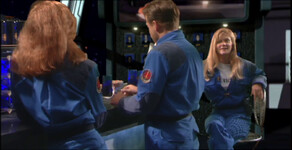
The carrier made the jump from Blackmane to the Freya System, where the High Command ordered the strike force to assemble for the attack that was supposed to cover the raid on Kilrah. Through the viewport in the rec room, Blair could see a few of the ships of the Terran fleet, some close enough to recognize shapes and configurations, others so far away that they glimmered as moving lights against the starfield.
It was a powerful force, but nowhere near the size of the fleet that had held the Kilrathi at Terra. Yet this was supposed to be Earth's decisive strike, the knockout punch that would end the war.
Blair watched the other ships, and doubted.
"You look like you could use some company," Rachel Coriolis said from behind him.
Blair turned in his chair. "Rachel . . . I thought you had the duty until seventeen hundred hours."
"This is just a break," she said. "We've still got a lot to get done before the jump to Hyperion tomorrow, so I'm grabbing a bite to eat now and then pulling a double shift." She mustered a weary smile. "So, are you going to invite a girl to sit down, or what?"
"Sure, sure," he said hurriedly. "Please. Sorry . . ."
Rachel laughed. "So, the rough, tough pilot goes to pieces under pressure." She took the seat across from him, her eyes searching his face under a worried frown. "What's the matter? Is it . . . Hobbes?"
He shook his head. "Not that . . . not really. Fact is . . . it's, well, it's us."
"Us? As in you plus me equals us?"
"Yeah. Look, Rachel, I started thinking some things over today, and I realized something. Yesterday I was all set for a nice little seduction scene. Dinner. Music. A quiet talk that could lead to . . . whatever." He looked away. "After what happened . . ."
"Hey, I understood then. I understand now. We'll still have our time together."
"Maybe it was best that we couldn't make it happen," he went on doggedly. "It might be the best thing if we don't try to push it now . . ."
"Are you backing out on me?" Her expression hovered between concern and anger. "I thought . . ."
"Look, Rachel, by this time tomorrow, God only knows where I'll be. Even if we carry out the mission, the deck's stacked against any of us coming back from Kilrah. It isn't fair to start something with you that I might not be able to finish. I wouldn't want you to have to go through what I did . . . with Angel."
"Pilots . . ." She shook her head. "They'd rather crash and burn than make a commitment. Look, Chris, I've been there, remember? I know what it's like. And I also know that if we keep putting our own lives aside because of what might happen tomorrow, eventually we'll run out of tomorrows. We'll never have anything to look back at, anything to remember except the war, just fighting and killing. I want something else to remember . . . whether it's one night, or an eternity. Don't you?"
"Do you really mean that? You want to go ahead, even knowing it might not be more than one night?"
She met his eyes and nodded. "I'd rather we had just one night together. Especially if the alternative is . . . never having any time at all."
"Your shift . . ."
"Ends at midnight. I'll skip the dinner and the music, if you'll be there for me when I come . . ."
"Midnight, then." She stood when he did, and they came together in a long, lingering kiss. "Midnight . . ."
And while Wing Commander IV avoids sex altogether, the novelization does still (somewhat bizarrely) ends by implying that Blair and Sosa are about to hook up:
Blair stepped into his newly refurbished cabin. The smells of fresh sealant and paint permeated the room. He cued the lightbar and saw a neat bed, a desk with a workstation, and a sofa and chair group.
He swung around as the inner door opened. Velina Sosa, her hair down and her uniform collar unbuttoned, stepped into the main room of the cabin. She carried a bottle and a pair of glasses. He noticed distractedly that she had captain's bars on her shoulders.
"Admiral Richards says that you'll need a Border Worlds liaison officer," she said, as she set the glasses down on the table. "He thought I might stand in."
Blair took a long look at her, and saw her smile. He felt himself smiling in return. "I'd like that," he replied. "I'd like that a lot."
She smiled, her dimples showing.
He had a feeling this tour was starting out well, very well indeed.
But things are very different in the Tri-System! Privateer 2 uses sex scenes as a reward! And you have FIVE of them with Melissa Banks. The first is the followup to rescuing her and then the others can happen randomly when you visit the Sinner's Inn any time after her second escort mission.
The ending of the Tamessa Ames cinematic mission has one more fade-to-black, this time with the Senator's daughter you rescued.
And then the Wing Commander movie gives us probably the series' most famous sex scene, where Maniac and Rosie are interrupted by a scramble:
The movie sequel novels, Pilgrim Stars in particular, go much harder on sex and the prose is often, ah, florid. We've got Blair and Angel getting together on the Tiger Claw…
By the time Blair reached Angel’s hatch, the notion of barging in and taking her into his arms felt so powerful that he lingered outside her door, trembling and listening for sounds from inside. Then he remembered her saying she had reports to make; she was probably in her squadron commander’s office. He rolled his eyes and hauled himself toward his quarters.
When the hatch opened, he found Angel stripped down to bra and panties and standing near his bunk. She wrapped an arm around his neck, dragged him inside, then kissed him hard and twirled her tongue around his. The hatch cycled shut, and her fingers fumbled for the buttons of his utilities. Out of the corner of his eye, he saw Maniac’s empty bunk and figured that Angel had somehow taken care of that technicality.
“Lieutenant,” she moaned after breaking their embrace. “What we’re about to do is classified, compartmentalized, and highly erotic.”
“Ma’am, are you sure that?”
She put a finger to his lips. “Just get naked.”
For once Blair sat through a jump with no intention of reaching out to find his mother. The secrets of being a Pilgrim no longer seemed important compared to the events of the past five days. He shifted in his jump seat and fought off the shit-eating grin that threatened to burst across his face.
Making love to Lieutenant Commander Jeanette Deveraux would stand as one of the most memorable experiences of his life. They had spent that entire day together, beginning in his quarters, then moving stealthily back to hers. He had explored every curve of her lithe, well-toned frame, and their bodies felt smooth and right together. In candlelight, they had swayed as one silhouette on the bulkhead, growing more hungry for each other as the hours wore on. They had kept silent, speaking with their hands, their eyes. The fire grew, and they had quivered, grimaced in ecstasy, and had fallen back, exhausted and gratified for their efforts.
While lying there after the first time, with Angel’s head resting on his shoulder, Blair had half-expected Merlin to suddenly appear with his appraisal of their lovemaking: “Well, bravo, Christopher. No performance anxiety this time, eh? And Lieutenant Commander, you’re quite flexible, aren’t you.” He had shaken off the thought, and when Angel had asked him what was wrong, he had told her that he sometimes got the shakes afterward. That much wasn’t a lie.
They had set another rendezvous for the following day, knowing that the rumors would begin to circulate but too infected with each other to be apart. Angel had, indeed, ordered Maniac to sim practice that first day, but she could not keep up that diversion. So they would meet in her quarters. Strange, though. During that second day, Blair had asked why she had suddenly changed her mind. She had told him not to ruin what they had by talking it away. After a moment’s consideration, he had realized the truth in that, though the unanswered question still troubled him.
By the third day--and the third tryst--Blair had grown frustrated with their silence. They made love repeatedly, working into each other’s rhythms like musicians, but the connection between them seemed to weaken instead of strengthen.
On the fourth day, Blair felt as though they were just working out their anxieties on each other’s bodies. Tenderness had turned to grunting. Their relationship was all about that final, pulse-pounding moment. Afterward, they would fall back and stare at the overhead, their gazes swimming through the shadows and never once falling on each other.
Out of nowhere, Blair had said, “We’re close. But we’re not close.”
“I know,” she had admitted.
“Guess I shouldn’t complain. I’m getting what most guys want, right? Sex with no emotional baggage.”
“I can’t give you any more than that. Not yet.”
He had rolled to face her. “But there’s hope?”
“You don’t know what I’m risking here.”
“I think I do.”
Blair had closed his eyes and had taken her into arms. She had buried her head in his chest, and he had simply held her there, trying to show that he wouldn’t let go, that he would be there for her for as long as fate allowed.
On the early morning of the fifth day, Blair had tiptoed out of his quarters, had keyed himself into hers, and had spooned her for an hour or two before the jump alarm sounded. During that simple moment he had felt more bonded to her than any other time. He had listened to her breathe and had let her silky hair fall in curtains across her face. Her scent, a light blend of perfume and coconut shampoo, had lulled him to sleep.
... and then star crossed lovers/enemies Taggart and Aristee.
The slightly muffled roar of running water emanated about one hundred meters away from the clearing, and while Aristee had gone off to meet with Frotur McDaniel, Paladin had ventured down a steep, natural embankment to a spectacular waterfall that rose some ninety meters and thrust out its great chest for nearly twice that. The water fell partly in a large double drop and partly in a series of smaller cataracts that gave it a crescent shape at its apex. Clouds of mist surged up from the river below and wound their way through the verdant treetops guarding the falls. The soothing rush of water and the angelic vapor that glossed the scene had lifted Paladin out of the nightmare of Aristee’s rebellion and had lowered him into a dream where he could be consoled, comforted, and loved without complications. After a few minutes of pure rapture, he had sat on a large rock whose face had been worn smooth. He had remained there for nearly an hour until Aristee had come down to find him. She had massaged his shoulders for a few minutes, then, like a giggling schoolgirl, had stripped out of her uniform and had jumped into the river. Paladin had shaken his head at her requests for him to join her. Then she had come ashore and had dragged him fully clothed into the water.
They had spent the rest of that first day at the falls, swimming, climbing the slick rocks to find purchase beneath some of the less turbulent falls, letting the water cascade over their naked bodies. They had even discovered a cave behind one of the cataracts, had speculated on the treasure that lay within, but visions of sharp-toothed predators had cured their curiosity. They had eaten fruit and bread that Aristee had stowed in her pack and were disturbed only once by a call from the XO, who had delivered a routine progress report. Paladin had wondered when Aristee would return to the conversation they had begun on the bridge, but she had seemed at peace with the moment and had not wanted to spoil it. He had tapped into a little of her peace and had avoided the issue as well. Given his surroundings, he could easily pretend that he had but one task: to draw pleasure from the environment and the woman.
After relishing in fourteen standard hours of sunlight, twilight had washed over the sapphire sky, and Paladin had suggested that they head back to the launch. Aristee had insisted that they camp near the falls. She had taken along a small, Marine Corps-issue survival tent, so they had sent up their bivouac on the shoreline. They had made love until they were breathless, then had remained in each other’s arms, whispered to sleep by the falls.
Morning’s light cut through the flaps of their tent and drew a blinding line across Paladin’s face. He suddenly bolted awake, wondering how long they had slept. 1125 CST. Aristee lay on her stomach, head resting on an arm, hair curving across her smooth cheek. She breathed softly and looked frail, a young girl incapable of all she had wrought. Paladin shifted gingerly toward her pack and removed the palmlink. He slipped through the tent flaps and stood shivering in the cool, moist air as he opened a channel to the Olympus.
... and again at the end of the book...
James Taggart sat up in her bed and leaned back on an ornate trioak headboard. Were it not for his scowl, he would appear almost angelic, framed by the leafy designs carved into the rare wood. A lone blue candle as thick as his wrist sat on an equally ornate nightstand, and in that poor light he had been reading hard copies of ancient star charts which now littered the deck and sheets. He acknowledged her presence with a meager glance.
“James, you’ve been in this bed for two days. You have to get up. You have to eat something.”
“No.”
“You’re brooding like a child. You made your choice. You chose blood. Just like your father did. Now it’s time to move on.” She stepped toward the bed, then toed off her sandals.
“Move on? To what? We’ve lost nearly half the crew and we’re operating on one ion engine. It’s only a matter time before we make a wrong jump.”
“If you’re so certain that we’re going to get caught, then why did you change your mind?”
He just looked at her, as though he didn’t know himself.
She shook her head, undid her sash, and let her robe slink to the floor. She slid naked into bed and rested her head on his chest. “We can’t get caught,” she whispered, tracing his navel with a pearly fingernail. “And we can’t die because there’s too much war left to fight.”
The novel End Run was probably the first part of the Wing Commander canon to have any sex. We've got Jason Bondarevsky's romance with his doomed ex-love Svetlana:
“Tell me honestly. If it was a choice now. If Tolwyn came along and said, ‘All right, Jason, you can take the girl and go home, but you’ll miss all the action,’ what would you do?”
“I’m not sure.”
“Liar.” She smiled again. “Once you’ve been in it, you can’t let go. I’m so scared about this next mission I can’t sleep. Hell, that’s why I’m drinking. But I wouldn’t miss a crack at their home world for anything.”
He nodded his head. He knew that he was as good as dead already, but just for once, it would be good to be able to give it to the Kilrathi, to hit them right in their own backyard, rather than this endless war on the frontiers. It was worth everything, and he knew he’d go nuts if he ever passed it up.
“So, we’re in agreement then,” Svetlana said with a sigh, and she poured another drink, and then downed it.
“Maybe when the war is over,” Jason said quietly. “Maybe then we can make another try at it.”
“Old lover, when this war’s over, you and I will be dust.”
Her voice was hard and cold.
“You sound like a damned marine.”
“I am a damned marine and don’t forget it,” and there was a slight slurring to her voice. “You lousy blue suits look down on us like we’re animals or something, but you don’t know what it’s really like. Honey, if you ever saw war the way I have, you’d puke your guts out.”
“All right, all right. You choose to be a macho grunt; you don’t have to prove it to me.”
“Prove something to you? Flyboy, I don’t need to prove anything to you. Go ahead and fly your lousy fighters, but it’ll be the marines that take the planets and win this war.”
“Without top cover, you’re nothing but target practice. I’m not the instructor who washed you out of flight school, so don’t keep trying to prove something to me now.”
Her eyes went cold and hard and she stood up.
“Go to hell,” and she stormed out of the room.
“Hey, you forgot your bottle . . .”
The door slid shut and he sat back in his chair.
“Nice going, Jason,” he sighed and was tempted to pick the bottle up and pour another drink.
The door slid back open and she stormed back into the room, came up to where he was sitting and pointed a finger in his face.
“And another thing, you egotistical bastard—”
Suddenly the whole thing seemed totally absurd and he started to laugh.
She looked down at him, her eyes filled with rage. And then it all started to melt away.
“You were about to say,” Jason whispered, looking up and smiling.
She hesitated and then her words came out as a whisper.
“Can I spend the night with you?”
And then a second time before she dies destroying a Kilrathi shipyard!
Jason switched off the lights, lay back on his bunk and closed his eyes, not even bothering to get out of his flight suit.
He wouldn’t have noticed someone else in the room if it hadn’t been for the faint scent of honeysuckle, a smell which took him back so many years to when he was in flight school.
“Svetlana.”
“Captain Grierson dropped by my landing craft on his way out and said you wanted to see me.”
Jason smiled. Grierson was all right; if only he was the one running this mission, there’d be no worries, other than what he knew they were finally going to face when part of the home fleet closed in.
“The perfume?”
“Our good friend Janice loaned it to me.”
“Perfume on a marine? Come on.”
“Just shut up and follow my orders,” she said as she started to unzip his flight suit.
Jason has a will-they-won't-they relationship with a Landreich pilot in False Colors. We don't know if they ever get together, but they do share a non-sex scene that IS straight out of Crash!
It was touchy work, and he was afraid his artificial hand might go back into spasms again if he tried to do anything too delicate.
He was so wrapped up in the job that he didn't notice where his other hand rested as he tried to steady himself. Travis flashed a painful grin. "Most guys at least give me dinner and a holo-vid before they try something like that," she said.
Bondarevsky pulled his good hand away from her bare breast, flushing, "Sorry," he muttered.
"Don't worry about it," she told him. "All in a good cause. Just remember about the dinner if we get back to Landreich, okay?"
"It's a date," he said, adjusting the healstrip one last time. "Can you handle the armor again?"
She nodded. "Yeah. But I won't be doing any dancing for a while." He helped her back into the chest and back pieces of her space armor, uncomfortably aware of her bare skin now. When it was sealed up, he gathered up her helmet and pointed to the top of the ramp. "The firing's stopped. Let's see what's going on." She gave a nod, and allowed him to help her up the incline.

Sully has been fixed so he doesn't quite understand what the fuss is about. Now, if there were a movie about crinkle ball fetishists..




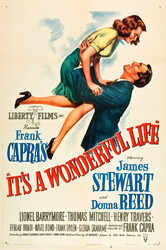
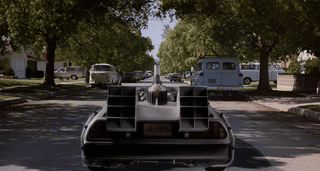
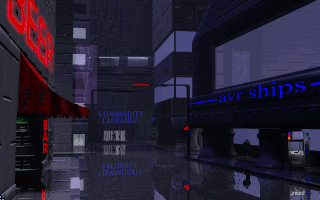
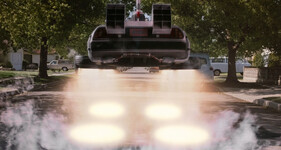
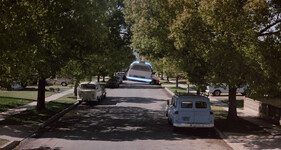
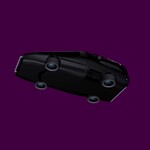
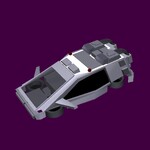
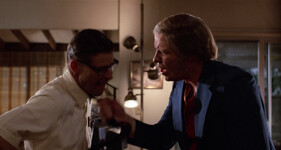
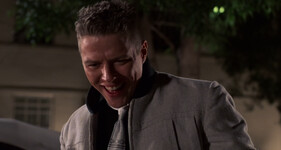
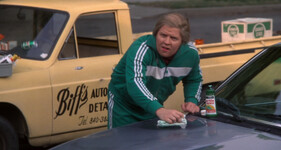
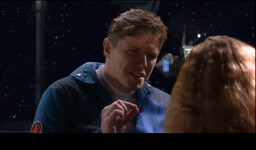

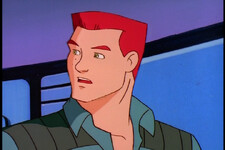
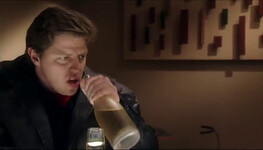
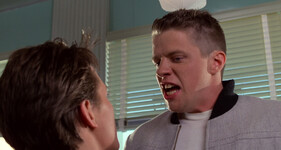
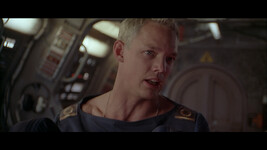


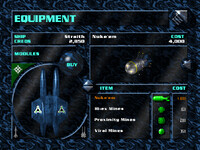
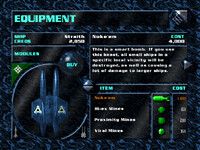
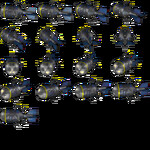





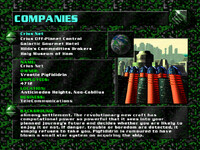
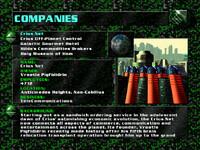



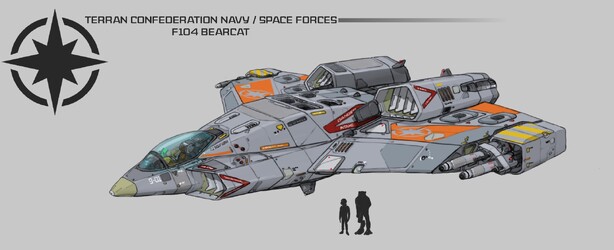
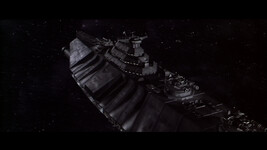

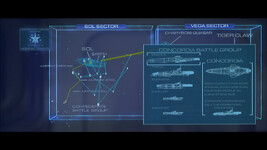
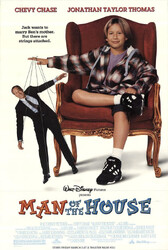

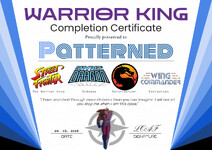
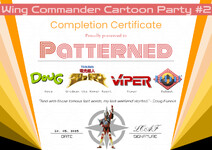

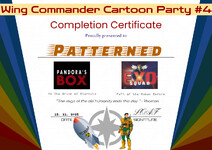

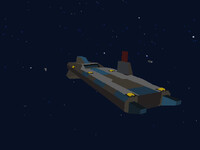
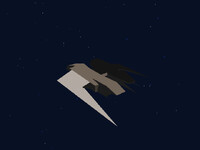
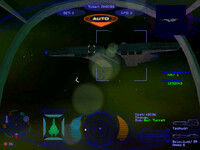

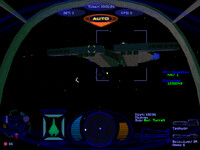
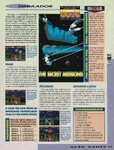
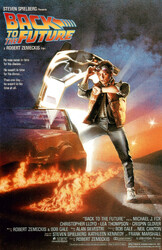


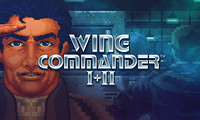
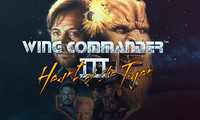
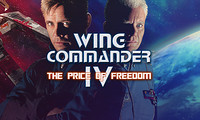

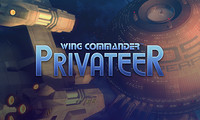
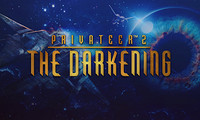
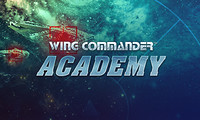
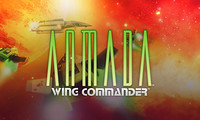
Follow or Contact Us